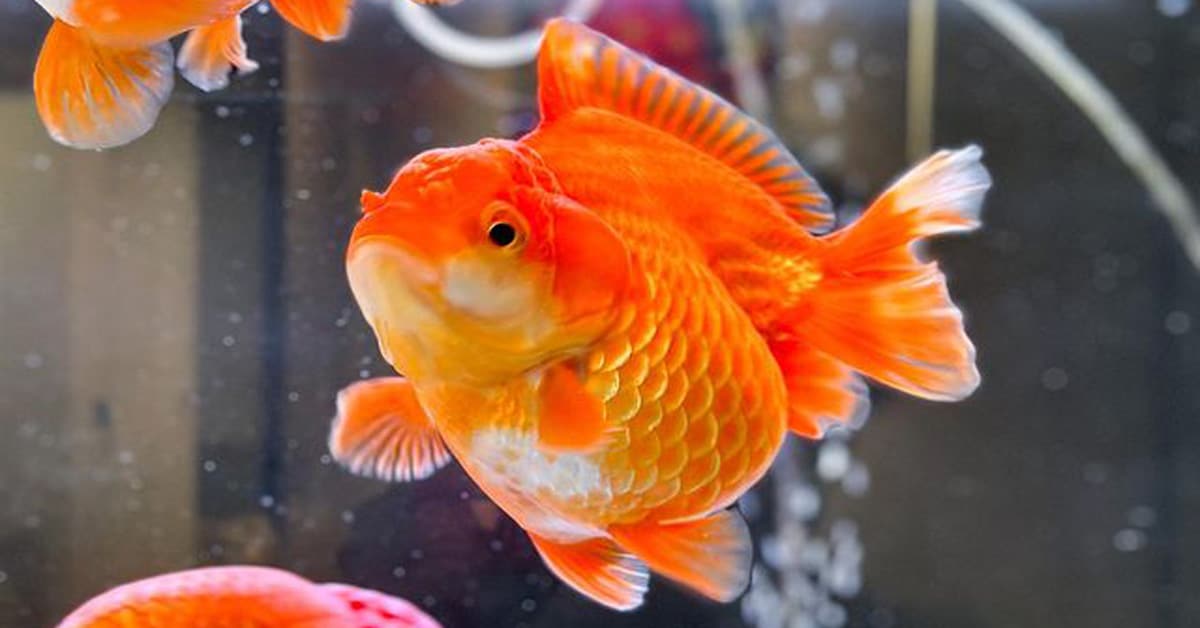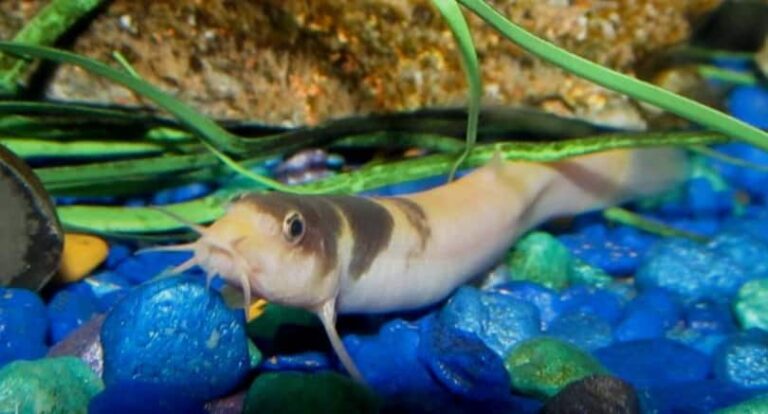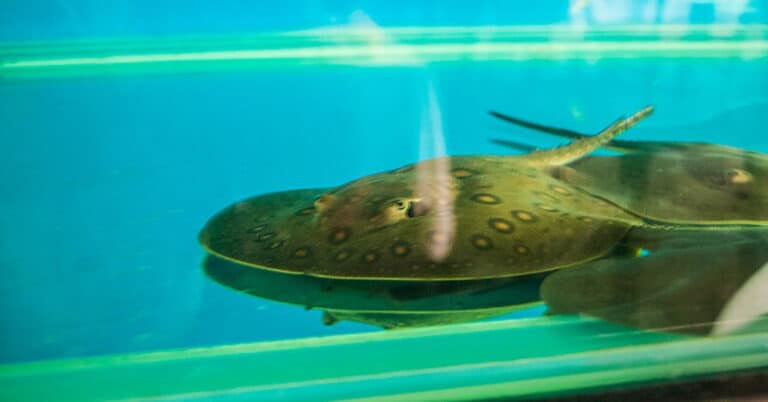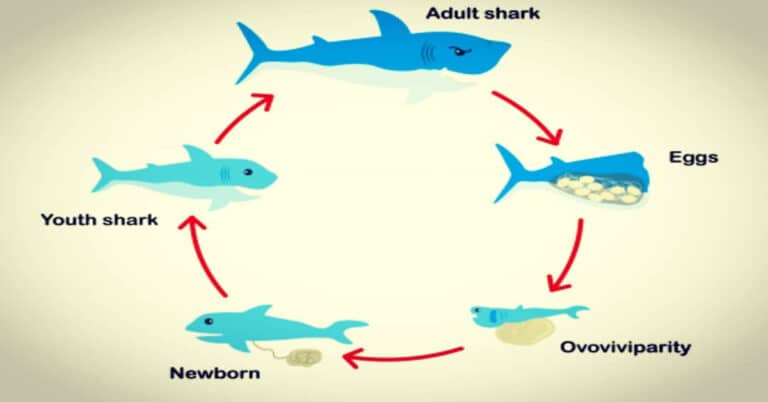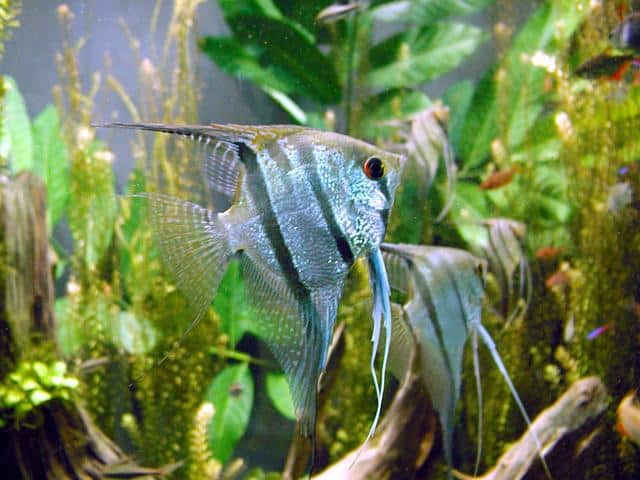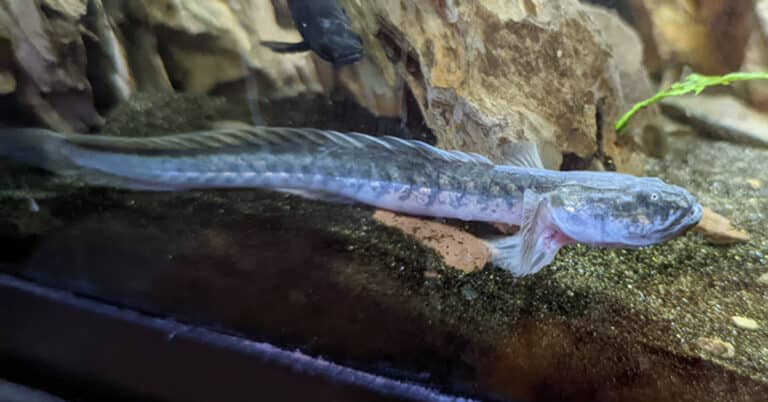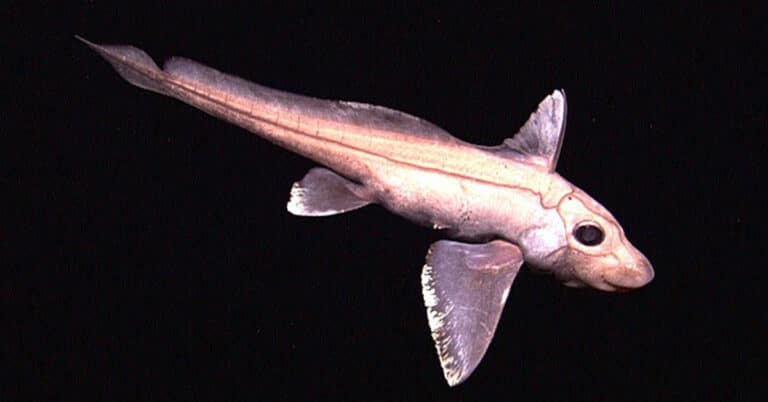Goldfish Lifespan and Stages of Development
Whether you maintain goldfish or have never owned one before, you are surely curious to comprehend more about goldfish lifespan development.
Similar to other animals, goldfish go through a natural life cycle that includes birth, development, reproduction, and eventual demise. The general stages of a fish’s life cycle comprise a thorough evolution, although each species of fish has its own unique path.
Knowing the stages of your fish’s growth is essential for the appropriate care and development of this adventure-inspired pursuit. So, let’s explore further to evaluate the goldfish lifespan and the variables that affect this process.
Goldfish Lifespan: Credible Method to Determine Goldfish Age
The oldest goldfish ever listed in the Guinness Book of Records was an astounding 43 years old, proving that they may live for more than 40 years.
It can be very challenging to estimate the age of goldfish, especially when they are maintained in an aquarium indoors. However, the most effective approach to guaranteeing 10-20 years of goldfish lifespan is to maintain stable tank conditions and safe water chemistry levels.
Size is not a reliable indicator since it depends on the fish’s genetic profile and the amount of water it is given to dwell in. Within the first few months of a goldfish lifespan, young goldfish will shift from their typical bronze hue to one that is more orange or gold. Old fish usually turn creamy white and lose all of their gold colorings.
Under a microscope, it is possible to determine the age of a goldfish if it has experienced seasonal changes in its environment, notably in temperature. Concentric rings that make up the scales are generated closer together in colder weather and further apart in warmer weather.
The fish’s age can be estimated by counting the bands of rings that are tightly spaced apart. However, even professionals in scale reading find it challenging to precisely age senior fish, which is remarkably comparable to the method used to age trees, which involves counting the rings in a cross-section of the trunk.
4 Stages of Goldfish Lifespan Development
1. Goldfish Fry
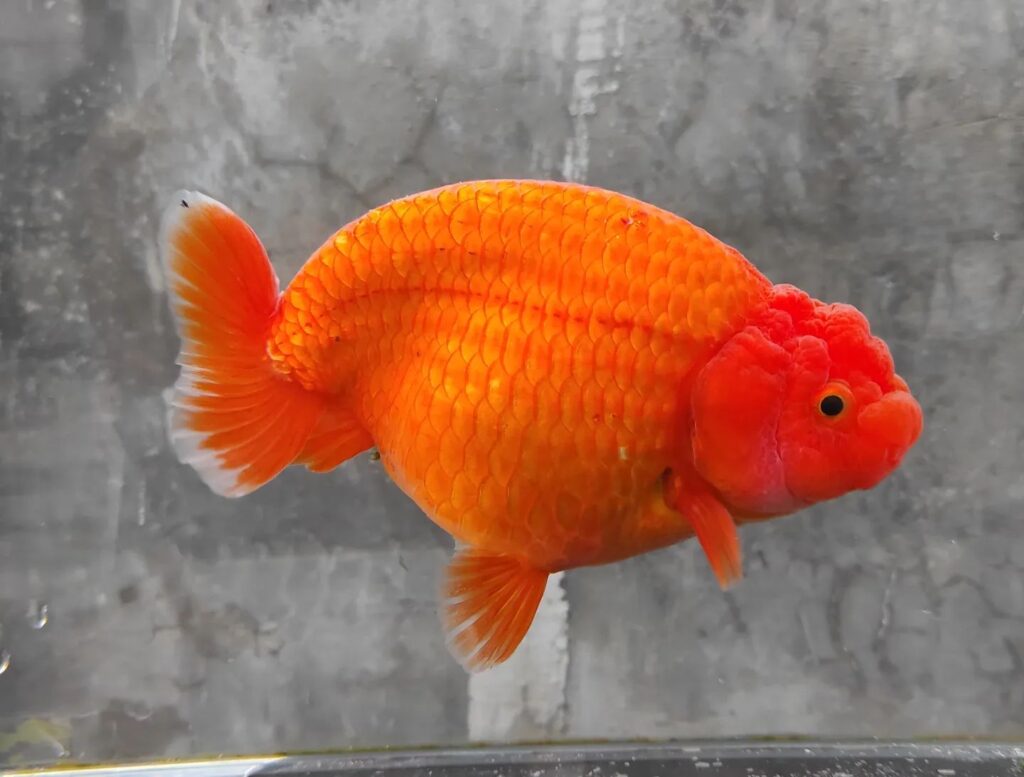
Goldfish fries are formed when the male fertilizes the eggs shortly after the female lays them. The goldfish fry can reach a maximum size of 0.2 to 0.4 inches.
It will be wise to keep the goldfish fry in another tank at this point to protect them from their predatory parents, as they are at risk of being eaten. For around 2-3 days after hatching, you shouldn’t feed the fry since they will have enough food in their sacks for these days.
Compared to other fish, your goldfish fry need a warmer environment to thrive. It is recommended to add a heater to your goldfish fry tank to maintain proper water conditions since the water temperature of the tank should be between 70 and 75 °F.
2. Juvenile Goldfish
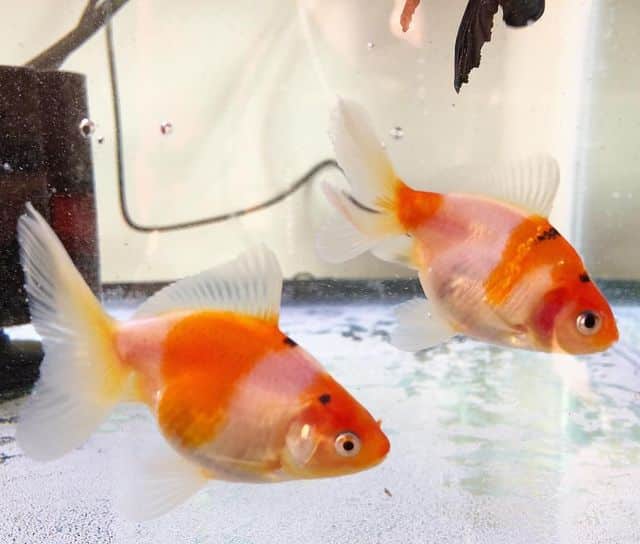
Goldfish fry become juveniles after they begin to grow scales and have fully developed fins. The transformation of a goldfish into a juvenile takes 1 month. The young goldfish are between 0.9 and 1 inch in length.
You can now feed juvenile goldfish the same food that adults consume. For optimum growth and development, juvenile goldfish should eat a combination of meat and green vegetables like peas. Goldfish in their juvenile stage demand water that is between 68 and 74 degrees Fahrenheit. Juvenile goldfish will start gaining weight at this point and will take 3 to 4 months to mature into young fish.
3. Young Goldfish
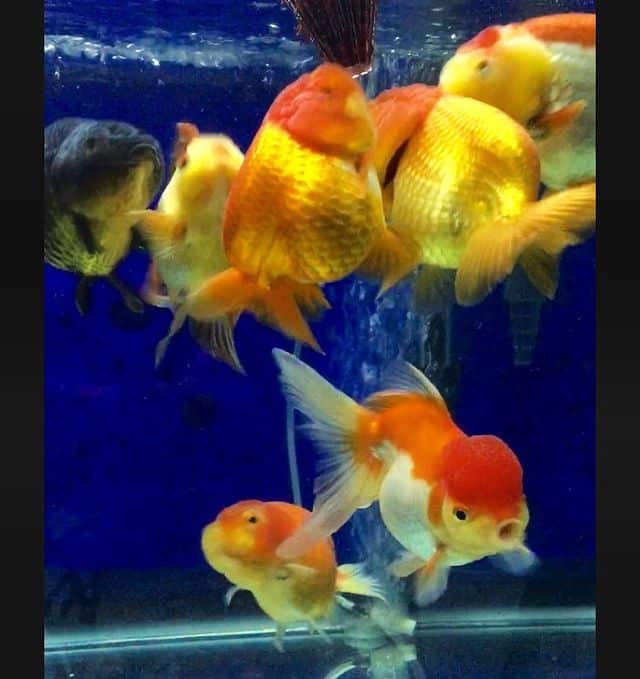
The meal you provide young goldfish should contain a variety of nutrients they require to develop and thrive. If you take the proper nutrient portion into account, the size of the young goldfish will be about 1.25 inches. The recommended temperature range for aquariums holding young goldfish is 68 to 74°F.
Also, remember to include a water filter in the goldfish tank, as this will help you maintain the quality of the water. It takes about 6-7 weeks for young goldfish to mature into adult fish.
4. Adult Goldfish
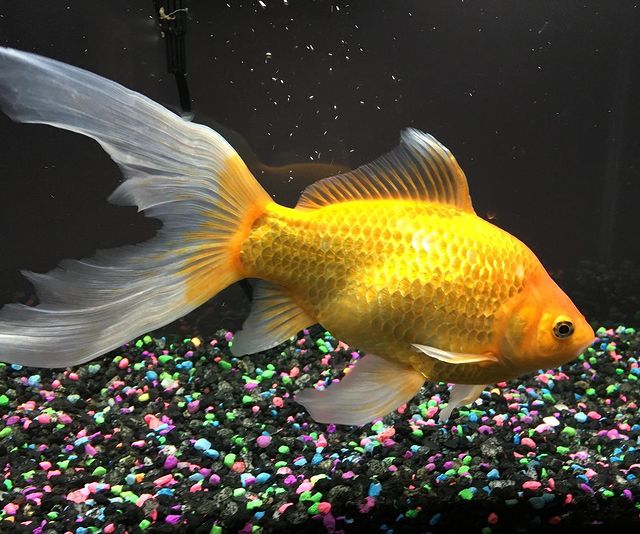
If kept in suitable water conditions, adult goldfish can grow to a size of 3 inches and will typically be around 2 inches long. Your mature goldfish tank’s water temperature should be between 68 and 74 degrees Fahrenheit. For the sake of your goldfish’s health, you should give them a properly filtered tank.
You cannot decide the gender of your goldfish until it is 3 inches long. Therefore, you have to wait until the adult stage to make this decision. The female goldfish will be rounder and thicker in shape, while the males will be slimmer.
5 Factors Affecting the Goldfish Lifespan
1. Space
You should take into account the size of your fish when they are adults and the overall quantity of fish you plan to keep to select the appropriate tank size for supporting relevant growth during the goldfish lifespan.
The aquarium size for some varieties of goldfish may need to be larger and longer than is typically advised for their body type. For example, slimmer goldfish tend to be more active, necessitating a larger aquarium.
Goldfish shouldn’t be kept in conventional fish bowls since they are too small for them. Nevertheless, some contemporary designs include lighting and filtration, which could be advantageous options. Goldfish require high oxygen levels to process the massive amounts of food required for rapid growth. Therefore, a small, overcrowded tank might stunt their development. As a result, you should always leave sufficient space in the tank for your goldfish to grow appropriately.
2. Filtration & Aeration
Due to their intense feeding habits and considerable waste production, goldfish require effective filtration to preserve water quality and provide aeration. By using nitrifying bacteria in the filter media, effective filtration will guarantee that all water is constantly mechanically and biologically filtered.
An aeration system, which might include air stones, can also be installed to ensure that water is adequately oxygenated if the filter does not produce bubbles or stir the surface water.
Make sure the current can be adjusted when choosing a filter. If fancy or rare goldfish varieties are to be retained, the current shouldn’t be too strong since rapid currents might make swimming difficult.
3. Water Quality
Goldfish produce growth-inhibiting hormones, which is another equally crucial factor in the necessity of regular water changes. Because of this, it’s a common misconception that goldfish can only expand to fill their aquarium. In reality, the Goldfish’s ability to gain weight is hampered by the accumulation of hormones that restrict growth.
While insufficient water conditions might hinder goldfish growth, rapid temperature fluctuations can also startle fish and cause serious health problems like dropsy. For fry and younger fish, the water temperature may be much higher than for adults. Eggs can be hatched at temperatures around 75 degrees Fahrenheit and kept there for as long as necessary to achieve maximal growth rates.
4. Plant Cover
Due to their nature as prey, goldfish need sufficient plant cover to reduce stress and promote activity. Since fish absorb pollution from the water, plants improve the environment, and proper plant growth is essential for fish health.
Real plants are preferred for providing plant cover. However, artificial plants can also be used as necessary. It is advised to provide about 50% cover of plants since the more greenery you provide, the more playful your goldfish will be.
5. Low-Grade Food
Goldfish’s growth can also be impacted by low-quality food. Therefore, their diet should be complete with all the nutrients they need for healthy development and growth. Goldfish use their intestines to digest food since they lack a stomach to do so.
Therefore, it is advised against feeding your goldfish too much meat since it may cause stomach problems. That’s why the majority of fish enthusiasts don’t provide their fish fry with enough food to grow at their fastest rate.
How Big Do Goldfish Grow?
Diet and the atmosphere have a significant impact on goldfish lifespan. In a pond, goldfish can reach lengths of 2 inches to well over 10 inches. In the wild, where there are unrestricted resources and space, they can even get larger. In their initial few months, goldfish experience fast growth from fry to larger fish. Survival is the primary motivation for goldfish lifespan evolution since, at this size, it is less complicated to avoid predators and obtain food.
For optimum growth, a goldfish lifespan requires a diet that contains about 29% protein and 12% fat. Keep in mind that goldfish are opportunistic omnivores and will consume a variety of things, including plants, insects, and microorganisms.
Since they have space to expand, outdoor goldfish in ponds can grow to enormous sizes. A 15-inch goldfish holds the record for being the largest. Ensuring proper conditions throughout a goldfish lifespan is still important, even if you maintain them in a larger arrangement in your backyard.
Final Thoughts
You have obtained comprehensive knowledge not simply about the goldfish lifespan and developmental stages but also about the variables that affect the process of evolution in general.
Long-term, you might be able to provide your goldfish with more affection if you are aware of their feeding preferences, space needs, and other factors that influence their development. By doing this, you will be able to optimize the potential for improvement, durability, and overall advancement of your goldfish lifespan.

Nato is a content writer and researcher with a background in psychology who’s eager to explore the wonders of nature. As a travel enthusiast and animal lover, she hopes to inspire others to discover and cherish the beauty and importance of the natural world.

